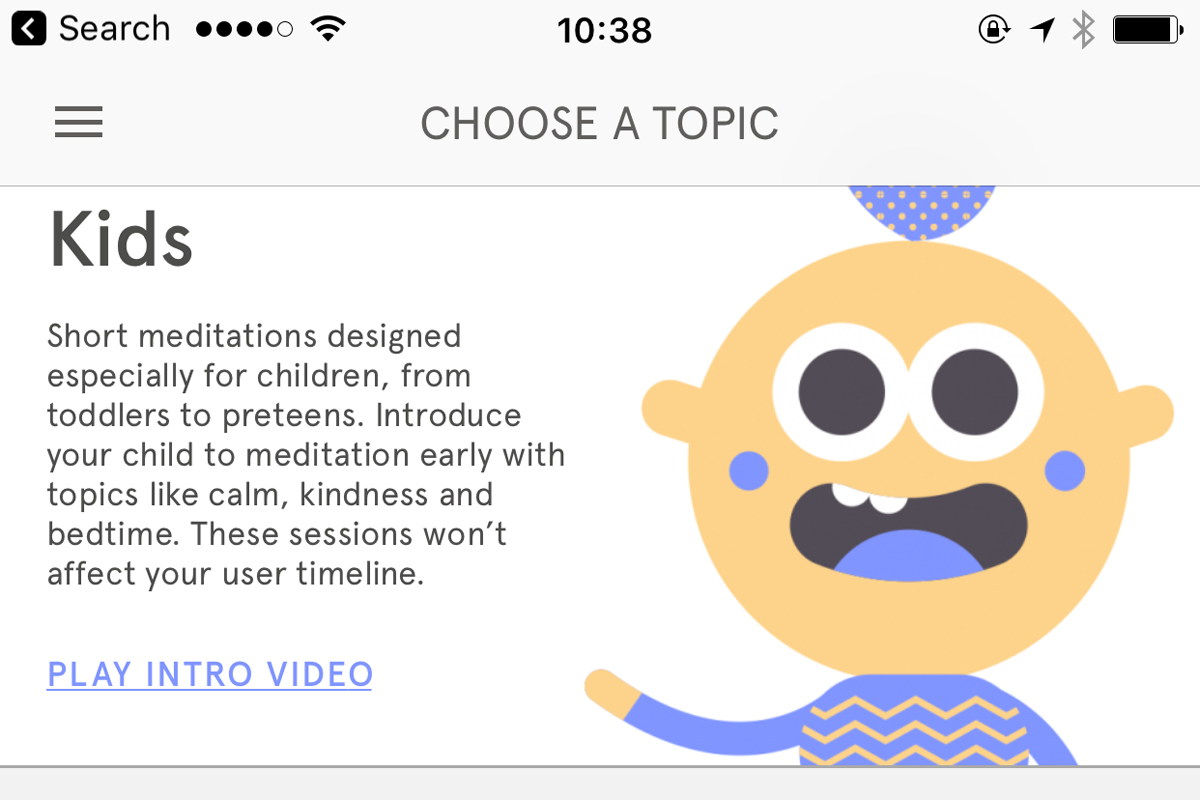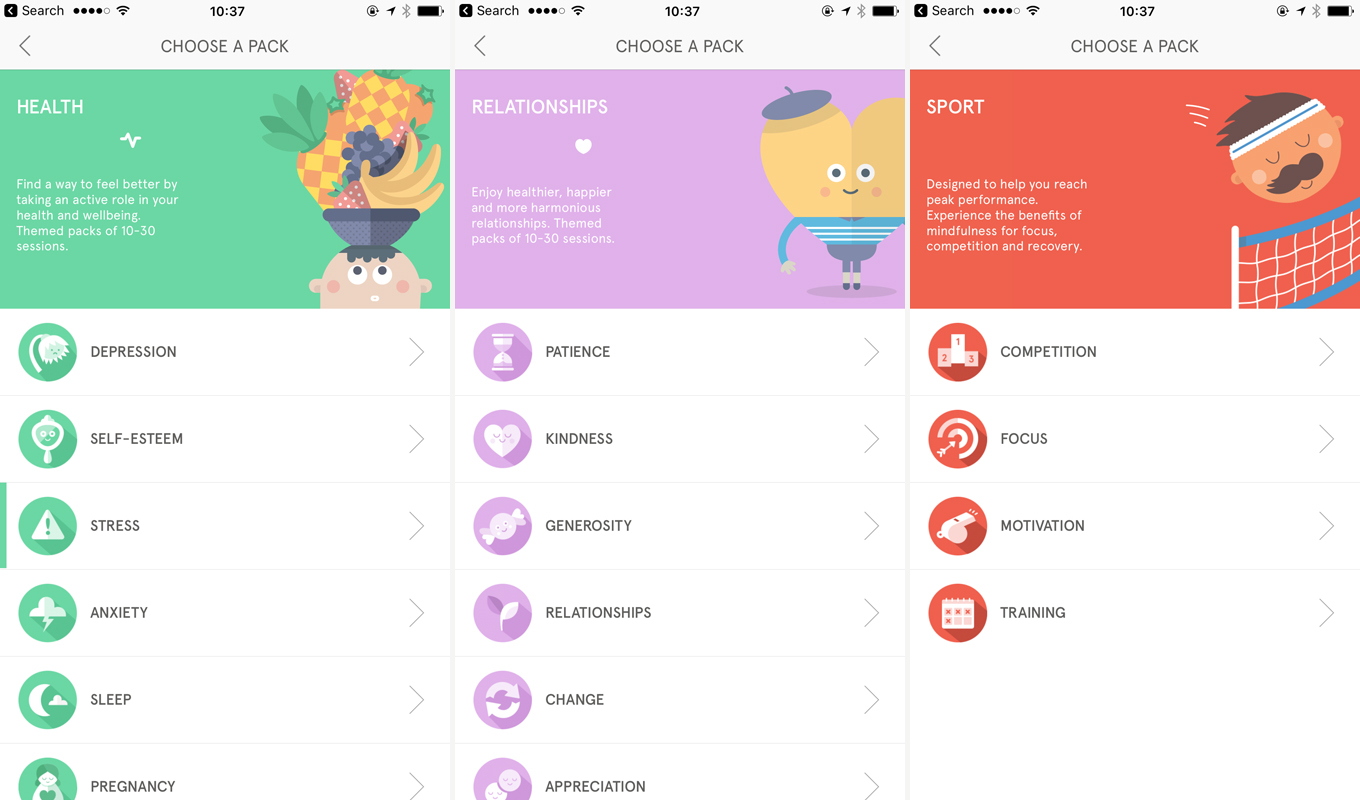The Headspace Guide to Meditation + Mindfulness
We interview co-founder Andy Puddicombe as his thoughtful book makes its way to the US

There’s something quite surreal about interviewing someone who speaks to you every day. This was the case when we sat down with Andy Puddicombe, founder of the Headspace meditation app. As daily users of the app, for which Puddicombe vocally guides people toward mindfulness, we felt an immediate connection upon hearing him speak. This uncommon experience, however, was driven by appreciation. From the app to other Headspace products and now his book “The Headspace Guide to Meditation + Mindfulness“, Puddicombe—a former Buddhist monk—seeks to better the lives of anyone willing to commit 10 minutes a day. We spoke with Puddicombe about the book’s impact beyond the app and what it’s like guiding so many people around the world.

There are nine million users globally?
Yes, and 45% of that is in the US. We will reach 10 million by the end of the year.
That’s a lot of people meditating.
We knew when we started that there was that potential. Richard and I both had in mind that if we could get between 10 and 100 million people globally we would actually make a meaningful difference. It’s good to be close to what we consider the starting line.
What is the role the book plays?
The way meditation was taught to me in the monastery—meditation is never taught in isolation; it’s never taught alone. There are three elements of it. There’s “the view,” “the meditation,” and “the action.” The view is how we look at life and approach meditation. If we are looking at it in the wrong way, then we are probably going to struggle not only in meditation but in life. An easy example of this is clear if we believe that thoughts are solid and permanent. That not only makes meditation tough, but it also means the rest of our life we will struggle with this very idea. If we can go into it with an idea that thoughts are tangible and transient, then all of a sudden we approach both in a different way. This book, in part, is about setting up that approach toward health and happiness.

The flip-side is that a lot of people meditate for 10 minutes a day and then they walk away. That’s it, they’re done. It’s kind of like “job done.” But what about the other 23 hours and 50 minutes? How do you integrate that quality of mind into the rest of your day? The idea of this book was to teach people the fundamentals and then how to make it a habit and how to integrate it to its fullest. For sleeping, eating, walking, running and everything else. Then the practicality of where to do it and when to do it. There’s also science in there as well.
You’ve built a means of distributing teachings through technology. It’s out there very efficiently, and it allows certain scale and growth.
It still blows me away. These teachings went to Tibet 800 or 900 yeas ago. It probably took 100 years to really reach those communities. Then you think that this reached nine million people in three and a half years. I’m not comparing the two, but it’s really interesting to think about how quickly digital allows us to scale, especially given that most of the people who meditate with us have either never meditated or tried it but not gotten on very well with it.

How do you continue to grow the tool and the platform?
Most months new packs go out. I spend a lot of time in the recording studio. For us, the way we see it, the vision is to improve the health and happiness of the world. We believe we can do that from birth to death and everything in between. I see meditation differently than a lot of people. I think there isn’t a part of life where it is not relevant. I am a big advocate of children meditating. We released Headspace for Kids recently. When we look at the demographics of our community, they’re not just young professionals in a certain age range from cities. Across the board, the youngest is four and the oldest is 92 and it’s an even split between men and women, in over 200 countries. Everyone has a mind, everyone struggles. We all struggle at different times with different things, but we could all use a guide. For me, it’s not just “how can we offer the service,” but “how do we educate the 98% of the world who have still never heard of meditation.”

Does it stress you out?
That, no. As we scale, keeping pace with the organizational challenges is far more stressful than trying to reach people.
What role do you play?
Headspace, the way we work, it’s an organization that doesn’t work in silos. We focus on culture internally just as much as externally. I might be with the product team one day, or marketing the next. I probably work with most of the teams but my favorite spot, of course, is the recording studio.
It’s helping people see that the truth is there’s nothing that gets in the way if you know how to approach it in the right way
And you’re based in LA?
We don’t really see ourselves as tech; we aren’t Silicon Valley. We are media, I suppose. Tech is the distribution platform, but we felt that LA was suited for us. It’s also sunny and we can surf, which was huge. We could also eat well. The quality of life is amazing.
Anything else you’d like to convey about the book?
The app is the practice and meditation bit. Everybody struggles. You can fall off the wagon. There are obstacles. I was lucky enough in the monastery to have teachers to ask. When you’re at home with the app, it might not feel complete. The book enriches the experience. I’ve been honest in the book and basically listed out all the erroneous thinking I had while living in the monastery and all the silly things I did and thought of while meditating. It’s helping people see that the truth is there’s nothing that gets in the way if you know how to approach it in the right way. There’s an antidote to everything.
Images courtesy of Headspace












